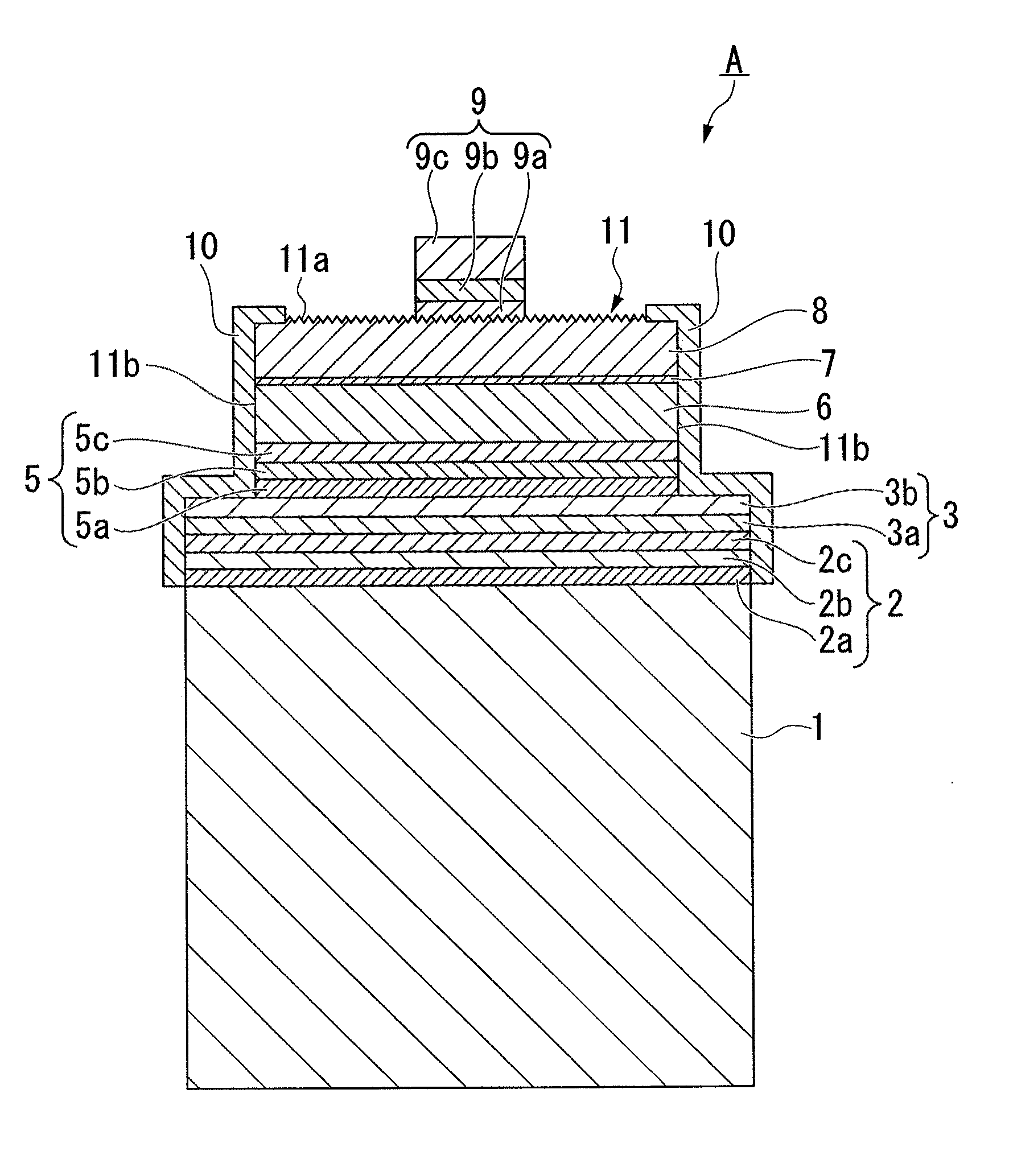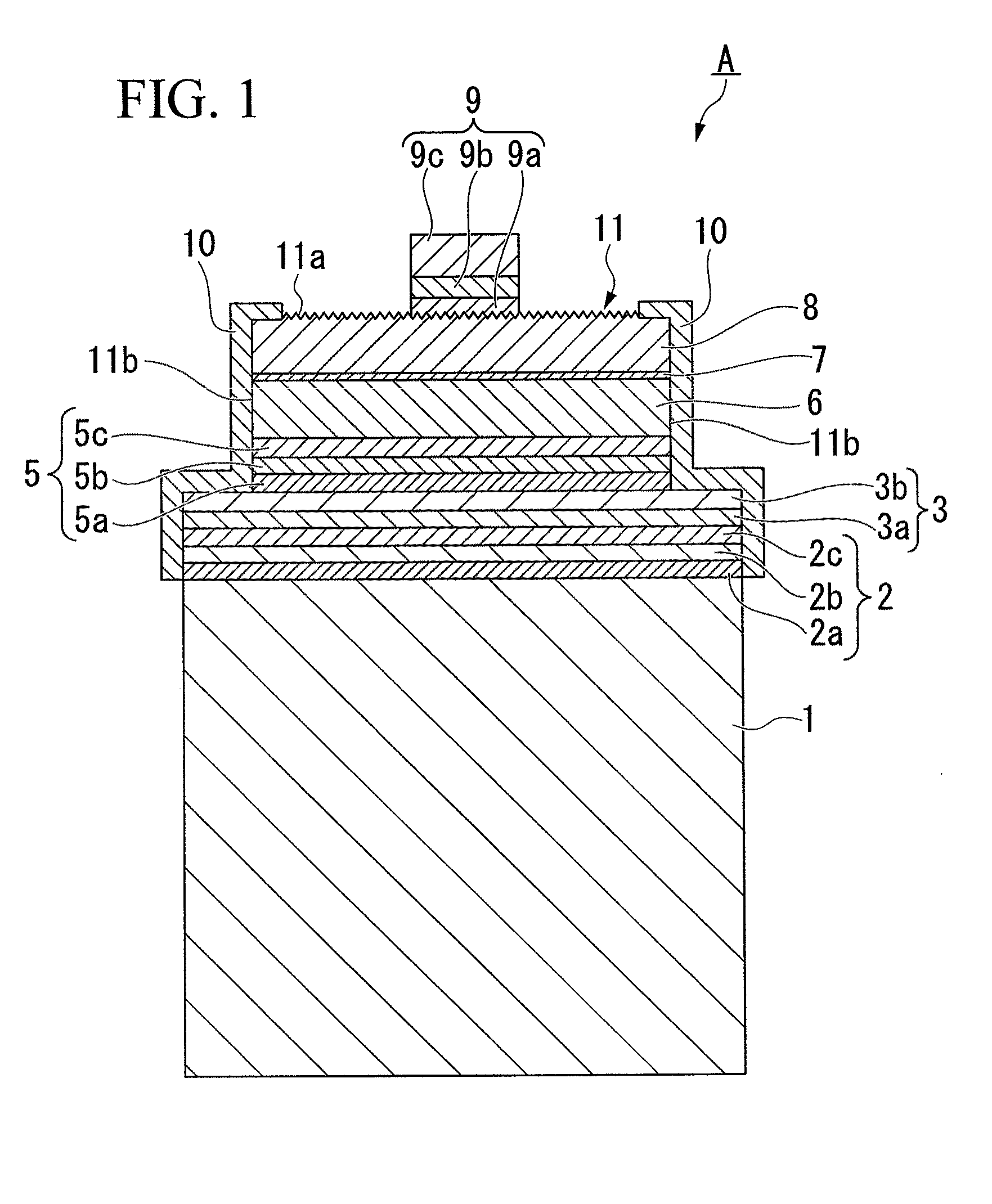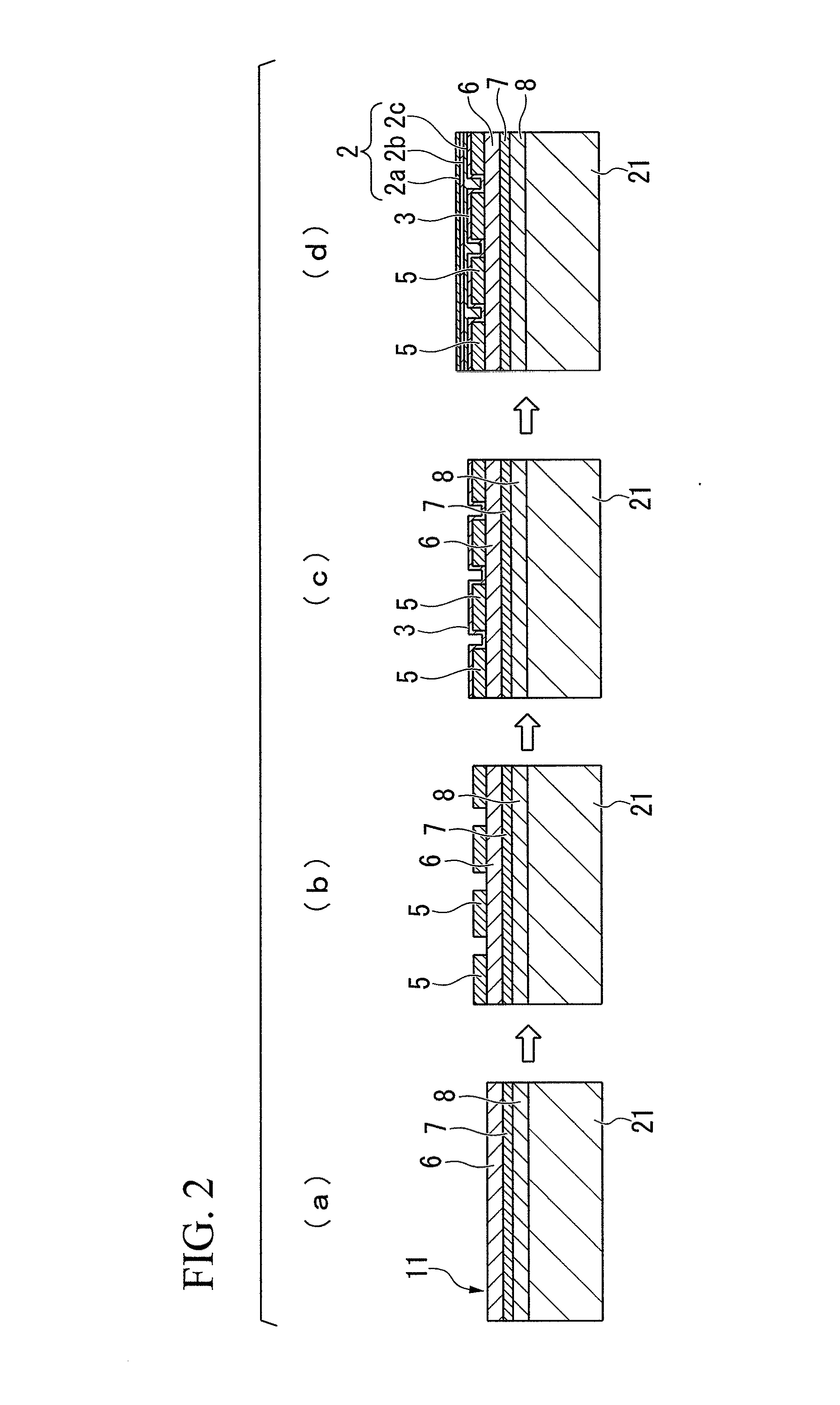Method for producing light-emitting diode
a technology of light-emitting diodes and diodes, which is applied in the direction of semiconductor/solid-state device manufacturing, electrical equipment, semiconductor devices, etc., can solve the problems of chip heat up, chip deterioration, and many problems of conventional elements using sapphire as a substrate, so as to prevent the deterioration of current-voltage characteristics
- Summary
- Abstract
- Description
- Claims
- Application Information
AI Technical Summary
Benefits of technology
Problems solved by technology
Method used
Image
Examples
example 1
[0125]A light-emitting diode A illustrated in FIG. 1 was prepared in the manner described below.
[0126]Namely, a buffer layer of thickness 40 nm composed of AlN was formed on a substrate composed of sapphire, and an undoped GaN underlayer of thickness 2 μm, a Si-doped n-type GaN contact layer of thickness 2 μm and an n-type In0.1Ga0.9N cladding layer of thickness 20 nm (the n-type semiconductor layer), a light-emitting layer having a multiple quantum well structure in which a Si-doped GaN barrier layer of thickness 15 nm and an In0.2Ga0.8N well layer of thickness 2 nm were laminated 5 times and finally provided with a barrier layer, and a Mg-doped p-type Al0.1Ga0.9N cladding layer of thickness 10 nm and a Mg-doped p-type Al0.02Ga0.98N contact layer of thickness 200 nm (the p-type semiconductor layer) were laminated sequentially onto the buffer layer, yielding a laminated semiconductor layer.
[0127]Subsequently, an ohmic contact layer of thickness 2 nm, a reflective layer of thickness ...
PUM
 Login to View More
Login to View More Abstract
Description
Claims
Application Information
 Login to View More
Login to View More - R&D
- Intellectual Property
- Life Sciences
- Materials
- Tech Scout
- Unparalleled Data Quality
- Higher Quality Content
- 60% Fewer Hallucinations
Browse by: Latest US Patents, China's latest patents, Technical Efficacy Thesaurus, Application Domain, Technology Topic, Popular Technical Reports.
© 2025 PatSnap. All rights reserved.Legal|Privacy policy|Modern Slavery Act Transparency Statement|Sitemap|About US| Contact US: help@patsnap.com



